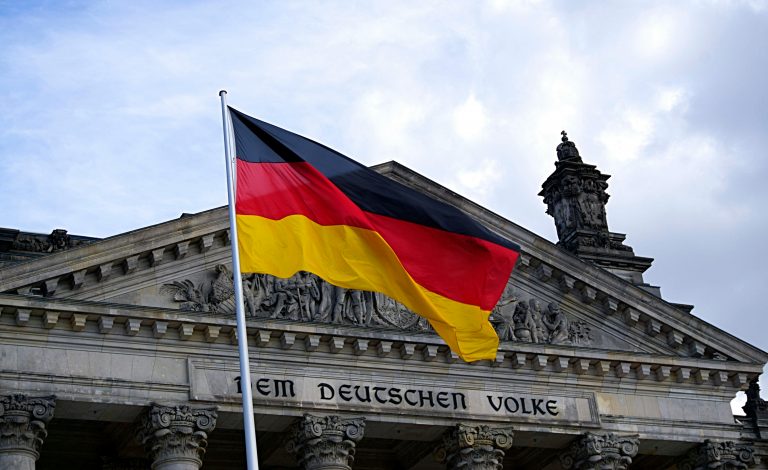
In the first half of 2025, Germany experienced a significant decline in asylum applications, with reports indicating a drop of approximately 43% compared to the same period in 2024. According to German media citing EU Asylum Agency (EUAA) data, Germany recorded 61,300 to 65,495 first-time asylum applications from January to June 2025. Notably, June 2025 saw fewer than 7,000 applications, marking the lowest monthly figure since March 2013.
This decline has positioned Germany as the third-largest recipient of asylum applications in the EU, behind Spain (76,020 applications) and France (75,428 applications). The majority of applicants in Germany were from Afghanistan (22%), Syria (20%), and Turkey (11%). Stricter migration policies, including increased deportations and border controls under Chancellor Friedrich Merz, are cited as contributing factors to this trend.
The 43% drop in asylum applications reflects the effectiveness of stricter migration policies under Chancellor Friedrich Merz’s government, including enhanced border controls, accelerated deportations, and tightened asylum regulations. These measures align with a broader EU trend toward stricter immigration policies, as seen in countries like Spain and France, which still face higher application numbers.
Register for Tekedia Mini-MBA edition 19 (Feb 9 – May 2, 2026): big discounts for early bird.
Tekedia AI in Business Masterclass opens registrations.
Join Tekedia Capital Syndicate and co-invest in great global startups.
Register for Tekedia AI Lab: From Technical Design to Deployment (next edition begins Jan 24 2026).
Reduced asylum numbers may ease pressure on Germany’s administrative and social systems, such as housing, integration programs, and public services, which have been strained in recent years due to high migration inflows. The decline suggests that Germany is becoming a less attractive destination for asylum seekers compared to Spain and France, which now lead in asylum applications within the EU. This could be due to Germany’s tightened policies, increased deportations, or shifts in migration routes favoring southern EU entry points like Spain.
The concentration of applicants from Afghanistan, Syria, and Turkey indicates ongoing geopolitical crises driving migration, but the lower overall numbers may reflect improved border management or deterrence measures in transit countries. A reduction in asylum seekers could impact Germany’s labor market, which has historically relied on migrants to address labor shortages, especially in low-skilled sectors. Fewer asylum seekers may exacerbate challenges in an aging society with a declining workforce, potentially increasing pressure to reform legal migration pathways.
However, reduced strain on public resources (e.g., welfare, housing) could allow for reallocation of funds to other priorities, such as infrastructure or social programs for citizens. The decline may bolster support for Merz’s center-right government, which campaigned on stricter migration controls. This could strengthen the Christian Democratic Union (CDU) and its allies, particularly after years of public discontent over migration policies under previous administrations.
Conversely, it may reduce fuel for far-right parties like Alternative für Deutschland (AfD), which have capitalized on anti-immigrant sentiment, though this depends on how the public perceives the government’s broader handling of migration. The CDU-led government’s strict policies have drawn criticism from left-leaning parties (e.g., Greens, SPD) and pro-migration NGOs, who argue that tightened rules and deportations undermine humanitarian obligations and Germany’s reputation as a haven for refugees. This creates a polarized political landscape, with debates over balancing border security and human rights.
Germany’s decline in asylum applications contrasts with higher numbers in Spain and France, highlighting uneven burden-sharing within the EU. This could exacerbate tensions over EU asylum policy reform, as southern and western EU states push for more equitable distribution of migrants. German society remains split on migration. Some citizens, particularly in urban areas, support integration and humanitarian asylum policies, while others, especially in eastern states, back restrictive measures due to concerns over cultural integration and resource allocation.
The decline in applications may reduce social tensions but risks alienating communities that value Germany’s open-door legacy. Existing migrant communities, particularly from Afghanistan and Syria, may face increased scrutiny and integration challenges as the government prioritizes deportations and stricter vetting, potentially fostering feelings of exclusion or insecurity.
Urban areas with diverse economies may feel less immediate impact from reduced asylum inflows, as they benefit from established migrant labor. Rural regions, however, may face labor shortages in sectors like agriculture or construction, where asylum seekers often fill gaps. Reduced asylum numbers could free up public funds, but the benefits may not be evenly distributed. Wealthier regions may see reinvestment in infrastructure, while poorer areas might continue to struggle with underfunded services.
Germany’s stricter policies may push asylum seekers toward southern EU countries, straining their resources and potentially leading to diplomatic friction. Countries like Spain, now the top destination, may demand greater EU support or criticize Germany’s approach as deflecting responsibility. Germany’s shift toward restrictive policies could alter its global image as a leader in humanitarian migration, potentially affecting its soft power and relations with countries of origin like Afghanistan and Syria.
The fall in asylum requests in Germany in 2025 reflects a deliberate policy shift that may alleviate domestic pressures but risks deepening divides both within Germany and across the EU. Politically, it strengthens the government’s position but fuels debates over humanitarian values. Socially, it may ease integration challenges but alienate pro-migrant groups. Economically, it could exacerbate labor shortages while freeing up resources. Internationally, it shifts migration pressures to other EU states, highlighting the need for cohesive EU-wide policies.



